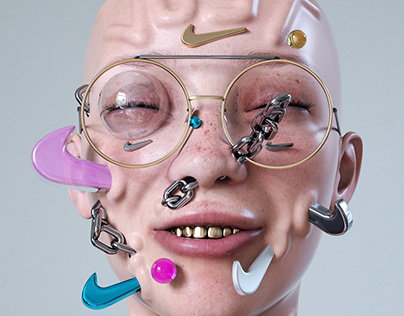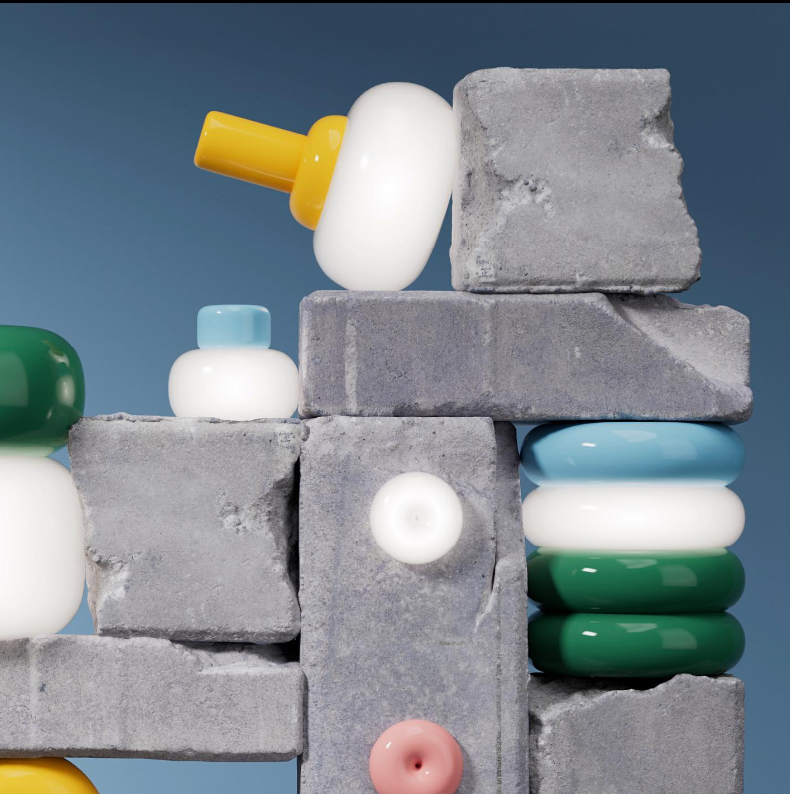For this Looking Outward blog I came across Nikola Damjanov’s “Protist Florist A01”, which is a surrealistic 3D object that resembles an alien flower/mushroom that has bloomed. In fact, the Nikola was inspired by “microfossils and radiolaria”The actual result was 3D printed but in the digital model, it is rendered and colored, showcasing its intricacy and strangeness. In this project, I really enjoy the use of patterns, while creating something very odd and irregular. I also really like how robust and bold the final result is, while contrasted with the delicate nature and attention involved to create it. It reminds me of the flora in Avatar, a movie that I am fascinated with. The process of making this was a combination of AI and Digital modeling, using very powerful machines that could get into all the fine details. More specifically, it used a “ NVIDIA Quadro RTX 6000 GPU”. While it is generative and there are endless possibilities, he creates sets of rules to create a cohesiveness between each iteration so the process is more controlled by him.
Category: LookingOutwards-05
Looking Outwards-05
The project I choose this time is a video on YouTube uploaded by verklagekasper, and it’s part of his Jelly Trip Experience. This video artwork is created by 3D computer art, showing various shape, color, and sound in perpetual jelly motion. While this video is uploaded about 10 years ago, the content is still amazing when I watch it. The colors are futuristic and change with a fluid feeling, which makes people see a glimpse of the color of the universe. And this variety of color changing makes the audience completely attracted by the video’s visual impact. Besides the color, the render makes the surface has transparency and refraction.
Here is a link to the video: https://www.youtube.com/watch?v=btVGCqpIoyk
Looking Outwards-05
Antoni Tudisco is a creative director and 3D visual artist based in Hamburg, Germany. The artist has garnered attention from brands like Nike and MTV through his unique and surreal 3D artwork that blends streetwear and futuristic elements. He also has hopped on to the NFT and Metaverse trend, selling artwork valued at roughly $5 million.

Tudsico utilizes Photofiltre (a freeware) and Gimp. Alongside these softwares, he combines Zbrush, Cinema 4D, and 3D renders of the human form with simulations of smoke, fur, and organic forms to create his portraits. I can definitely see Tudisco’s personal style in his work, and how he translates his interest in streetwear fashion into his artwork to create pieces adored by other streetwear lovers. Not just by me, but Kanye West, Post Malone, and Frank Ocean have all applauded Tudisco’s cinematic and conetemporary hip-hop 3D art.

lo: 3D computer graphics
The work of Son Taehung, and company 37th Degree as a whole, is very interesting to me and I wanted to look into it. 37th Degree is a production company that executes computer generated graphics in films and videos very well. Son Taehung in particular works in their South Korean sector with entertainment company SM, working on various K-pop videos. I couldn’t find a lot on their process itself, but the blending of mediums and techniques in their projects is intriguing and shows their level of expertise and artistic vision. This kind of seamless mixing and matching of reality and virtual assets wouldn’t be possible without computer generated graphics.
Looking Outwards 5
This week I looked at the artist Sebastien Monroy , a designer who programs generative art, games and digital experiences. The project I looked at of his is called Palm Reading, a project that generates abstract animations based on bioelectricity measured from palm tree fronds in Koh Lon island. He recieved an audio file from measuring the electric pulses of the plants that he took and converted into a moving image inspired by the movement of the waves generated by the plants. I think the result was really cool.
https://www.dinacon.org/2018/07/04/jessica-anderson-sebastian-monroy/
I couldn’t upload the video’s because they were too big for wordpress but they’re on that site
Looking Outwards 05: 3D Computer Graphics
Creator’s Name: Together Design UK
Title of Work: “Make your own cider:
Year of Creation: unknown
This project is an incredible example of 3D Computer Graphics applied in graphic design. This graphic is extremely intriguing to look at. The motion portrayed in this still image makes it very visually interesting and it looks like the liquid created a splash that is shaped like a wine glass. This graphic serves the purpose of promoting a “make your own cider” brand and it is done quite well. I believe these types of graphics are created with a type of 3d rendering program and that program is designed using algorithms to achieve this purpose. I am not exactly sure of the exact algorithms, but that is my guess. It is apparent that the creator’s purpose is to communicate a certain message about the brand and I think the company did a good job.

Looking Outwards – 05: 3D Computer Graphics
I love how Santi Zoraidez is able to use 3D computer graphics to render materials of multiple different objects with different textures, creating a surreal visual effect. Also, the collision of the hyper-realistic object, perfectly smooth texture, and the unrealistic physics of the items create a scene that viewers might believe is too real that it is not real at all. The ability to change textures at will and render them with perfect real-life physics (light and shadows), creates such a new type of art style, a style in between realism and surrealism, a purely imaginative discussion of space (artists goal) formed by realistic materials, textures and shapes (3D computer graphics).
Link:
https://www.instagram.com/p/CX_tYgmNwn3/

Blog 05
Erik Bean, an architect based in the UK, uses 3D modeling/rendering and digital illustration to comment on political issues in the UK and how it relates to the idea of a perfect society or “utopia.” His thesis work, Capital for the Collective: The Labour Miracle, uses a unique rendering style based loosely on old maps to bring together the real and imagined to propose a new way in which the public should interact with public space. In architecture, algorithms and certain computational technology is used to create larger renders such as Grasshopper, which help to simplify the work to build something digitally. I imagine that he used tools like this as well as digital illustration/editing tools and 3D modeling tools in order to create his detailed works. I appreciate the thought given to how public space/architecture interacts with politics and his addition of climate-focused architecture. Bean’s representations of the uniformity and chaos of people engaging in public spaces is a very interesting twist on traditional photorealistic renderings that have become so popular in architecture, and push usual student work into a whole new realm.
LO5: 3D Computer Graphics
In this week’s looking outward practice, I’m very interested in a 3D graphic art, Forest Diorama, designed by Roman Klčo. This piece of art portraits a forest scene with possibly 3D rendering methods. In general, the art creates a axonometric view of a certain part of land, putting trees, rocks and mountain slopes onto it, also simplifying it in more cartoonish shapes. These kind of art could be done with renderers like Blender, which is very interesting in making small scenes that tell stories.
https://dribbble.com/shots/5455348-Forest-Diorama

Looking Outwards -05
3d Computer Graphics
An artist in this field that I admire a lot is Omar Aqil. I first got to know him from his series of 3D recreations of famous Picasso paintings. Omar uses computer-generated imagery to portray three-dimensional aspects of two-dimensional drawings and represent them as renderings or animation. His works are very representative of the original paintings but with an almost cute twist because of the roundness of the three dimensional shapes he uses. I like these projects so much because they just add an extra depth to these familiar paintings and make them fun and interesting. Other than his mimicry series, Omar also has other series of portraits, products, and other sculptures that are dynamic in colour and depth. His renderings often incorporate organic aesthetic elements that contrast the “tech” feel of the piece, making the image look unreal and tangible at the same time.
Omar Aqil
![[OLD SEMESTER] 15-104 • Introduction to Computing for Creative Practice](../../../../wp-content/uploads/2023/09/stop-banner.png)

